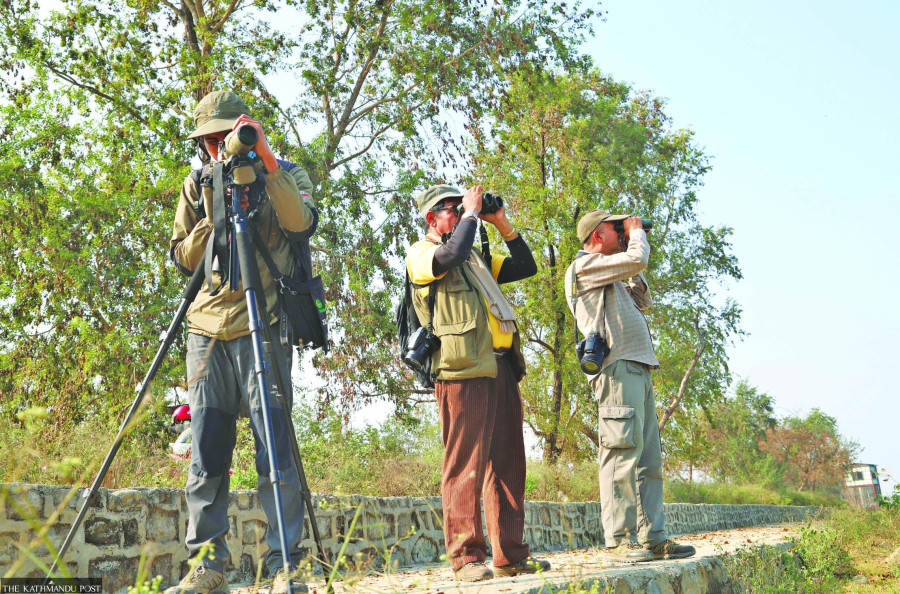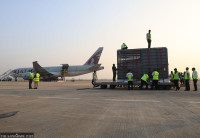Lumbini Province
Jagadishpur lake receives fewer migratory birds
Human encroachment of the lake area is a major factor behind the decline in the number, ornithologists say.
Manoj Paudel
The onset of the winter season usually sees the arrival of migratory birds in Jagadishpur Lake, a Ramsar wetland site in Kapilvastu, in large numbers. However, the number of migratory birds making their way toward the lake from the mountainous regions, some from as far as Siberia, has decreased in the last two years, according to ornithologists.
The number of bird species in the lake area has decreased by 23 percent in 2022.
The bird count was done by Wetland International, a global non-profit organisation that works to sustain and restore wetlands and their resources, in coordination with senior ornithologists Hemsagar Baral, Tika Giri and Dheeraj Chaudhary.
The number of birds in the lake in 2021 stood at 12,063; the number was 20,807 in 2020, according to Wetland International.
The bird count that started from the south-eastern corner of the 157-hectare lake concluded after reaching the south-western corner.
The counting put the number of common Coot at 4,230; Red Crested Pochard at 2,090; Common Teal at 1,085; Lesser whistling duck at 980; Grey Headed Lapwing at 75; Garganey at 55; Northern Pintail at 50 and Anas poecilorhyncha at seven.
According to ornithologist Giri, the number of Common Pochard, which is considered rare, is 204.
“Three species of birds were counted in the thousands and two bird species in the hundreds,” he said. Eurasian wigeon, Little Cormorant, Great Cormorant and Gadwall along with Ruddy Shelduck, Northern Shoveler, Cotton Pygmy Goose, Common Moorhen, Northern Pintail, Ferruginous Pochard and Mallard were also counted.
This year, there were nine fewer species of birds than last year.
“Out of 49 species of birds counted last year, only 40 species made the count this year,” said Giri. “Among them, the world's rarest Sarus Crane, Lesser Adjutant and Common Pochard were counted. The count was done based on the colour of the bird, body composition, and sound. The birds were counted using binoculars, GPS, and sound recorders.”
Ornithologists say the encroachment of the lake area is one of the leading causes behind the decline in the number of birds migrating to the lake in the past two years. The use of boats is also disturbing the bird population in the lake and surrounding areas, they say.
“It is wrong to increase human activities in the places listed in the Ramsar area. Jagadishpur is becoming more and more hostile for the bird population due to excessive hunting. The development of the lake as a tourist spot is also harming the bird population in the area,” said Baral.
The lake is spread over an area of 157 hectares and is located in Kapilvastu Municipality-9, 11km north of Taulihawa, the district headquarters. As Nepal’s biggest man-made lake, the Jagadishpur lake has been included in the list of Wetlands of International Importance. It was listed as the international wetland area in August 2003.



 10.12°C Kathmandu
10.12°C Kathmandu















